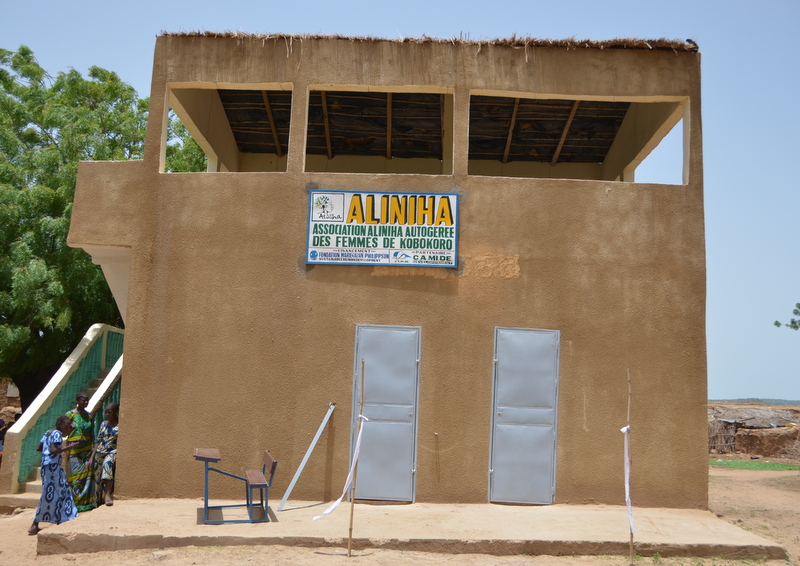



Case Aliniha
Aliniha Huts: the local, self-managed point-service
An important step in the commitments taken by each self-managed Aliniha association when they subscribe to the Aliniha International network is the construction and management of their own Aliniha Hut. The women find themselves on the front line, carrying out a series of activities that increase their autonomy. Designed to be a common brand, the Alihina Huts have pre-determined plans and architecture. Built with the help of neighbours, the modestly-sized building consists of two rooms, one for the boutique for selling products produced by the women (shea soap, fuel-efficient stoves, vegetables, etc.) while the other acts as a counter for the micro-financing institution of which the AAA is a member. On the roof, it is possible to add space protected by straw matting and accessible using an outside staircase that acts as a meeting and training room. The boutique, like the banking services, is run during opening hours by AAA women that are chosen and trained for this purpose. This enables them to acquire new competences. On the boutique side, they manage the till and small trading transactions. On the counter side, they collect the savings of the AAA members, as well as the reimbursements of the micro-credits. They fill out the books, noting the incoming and outgoing expenses, clients’ savings books and the statements. When a woman introduces a request for credit, they give a first opinion, based on what they know personally about the context and the person’s ability to reimburse the sum. In the early days of the development, the different functions are carried out under the close supervision of the micro-financing body on which the Aliniha Hut depends. Mobile tills from the agency’s headquarters often go into the field to finish or perfect the various Hut managers’ training. ResultsThree Aliniha Hut are currently open, including banking counters that very much used by the women. The shop part depends very much on local conditions. In Senegal, the AAA Hermakono’s hut is located in a large town well served by businesses, and could be offered as a place for market traders to store goods. In Mali, on the other hand, the two huts (Sirela and Kobocoro) are located in villages some fifteen kilometres from Kayes that have no shops. Stocking up there saves people travelling into town and provides easy access to basic commodities such as rice, flour, tea, sugar, mobile phone recharges, etc. The location, which was carefully studied, explains the huge success of the Kobocoro hut. |




